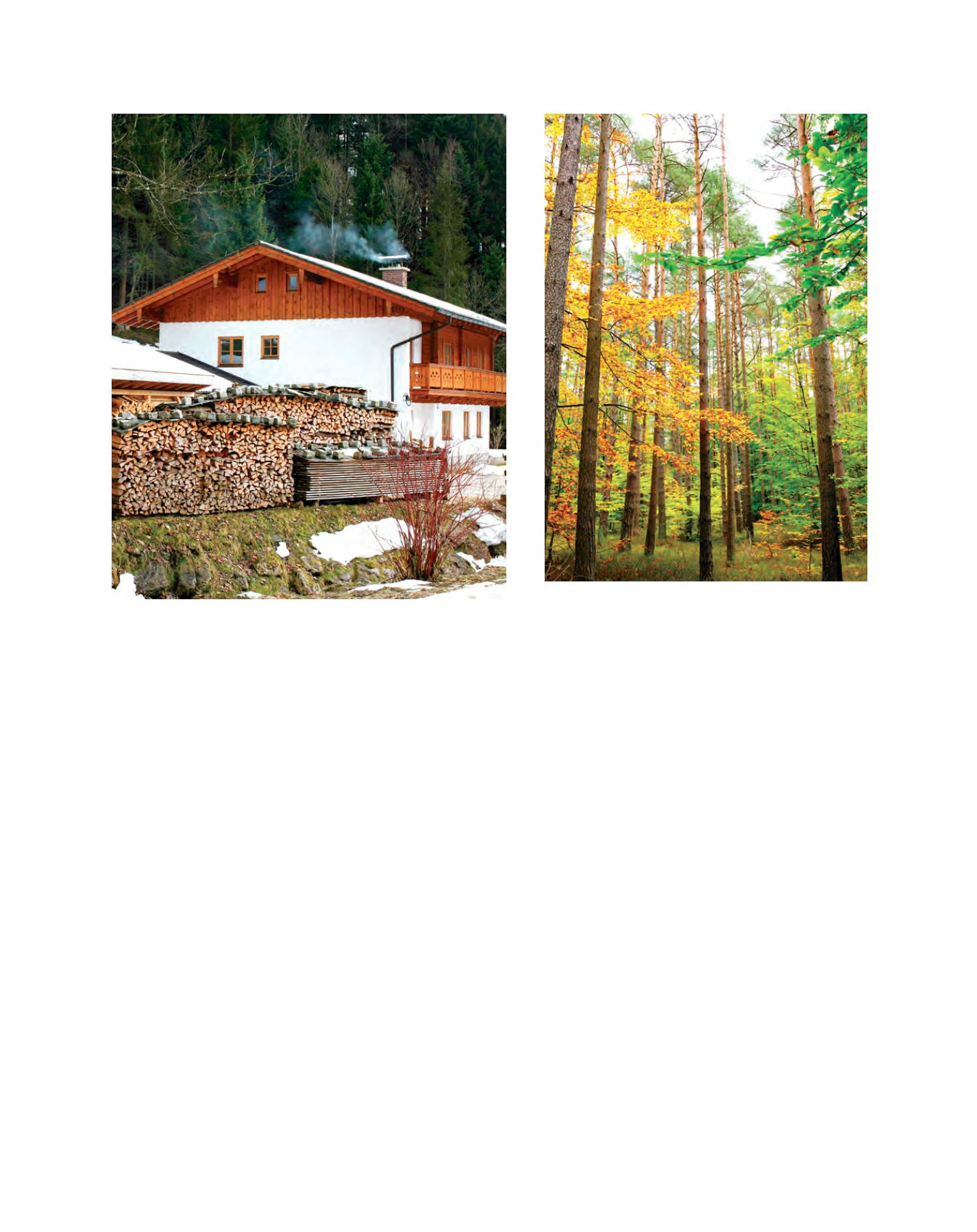

[
] 111
by the Federal Government in September 2011, just in time for
International Year of Forests, 2011. Its main aims are to forge a
new balance between the diverse demands on and capabilities of
forests and to pursue the multifunctionality objective for German
forests, while maintaining and enhancing conditions for non-state
forest owners to manage forests profitably. Where forest utilization
is concerned, the aim is to strike a balance between CO
2
sequestra-
tion within forests on the one hand and timber use on the other.
For German forests, this means maintaining the present utiliza-
tion rate without striving to increase it much further. Instead, an
increase in the efficiency of wood and energy use, ideally in line with
cascade use, is gaining more and more importance. Where it relates
to forests, the National Forestry Strategy 2020 will complement the
existing National Biodiversity Strategy.
As Germany is a federal republic, responsibility for the forests
lies mainly with the regions. Steps to implement the new strategy
must therefore be discussed with the German
Länder
. The Federal
Government can set the legal framework and offer incentives,
such as promotional measures. It was in this context that the
decision was taken in 2011 to introduce a new forest climate fund
from 2013. Among other things, this fund will aim to promote
measures to increase the resistance of forests to climate change
and related natural disasters. It will also promote measures to
improve the contributions of forests and timber to combating
climate change.
Germany has been an active partner in most of the global
debates and initiatives to conserve and sustainably manage forests.
Its objective in the field of international forest policy is to ensure
that the multiple contributions of forests to food secu-
rity, the alleviation of poverty and the protection of
rural livelihoods, as well as to environmental conser-
vation, climate protection and a green economy,
are more widely acknowledged at all levels. Forests
should also be safeguarded and fostered through
sustainable forest management, which takes all the
existing and potential products and services provided
by forests into account. To this end, an effective coor-
dination of the diverse international efforts to control
deforestation and forest degradation and to promote
sustainable forest management is required to enhance
their impact. Apart from measures abroad, Germany
also actively supports the activities and legislation of
the EU against trade with and consumption of timber
from illegal sources. A national procurement policy
that promotes timber from sustainably managed
forests and an initiative to develop a fingerprinting
methodology for timber to identify timber species and
origins at customs points are among the support meas-
ures implemented.
Forest are a genuine treasure. All efforts need to be
done to maintain them in their substance and beauty.
Forests 2011 offers an extraordinary platform to
communicate this message to a wider audience. The
300th anniversary of Carlowitz’s striking idea of sustain-
able forest management in 2013 will show whether we
have understood this message.
Timber as a source of energy is enjoying an unexpected revival
A national procurement policy promotes timber from sustainably
managed forests
Image: Michael Reitz 2011 / www.kunstingenieure.de
Image: Michael Reitz 2011 / www.kunstingenieure.de
















